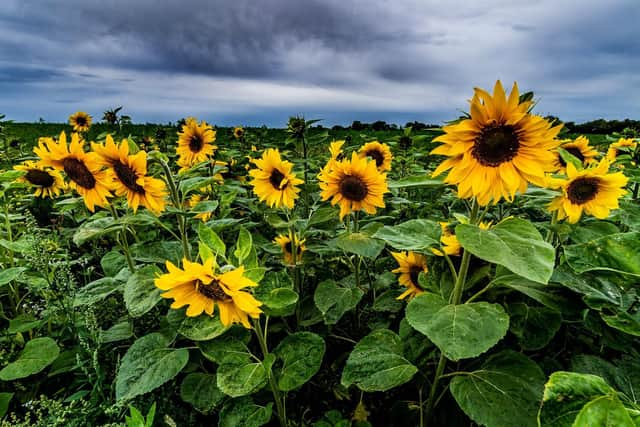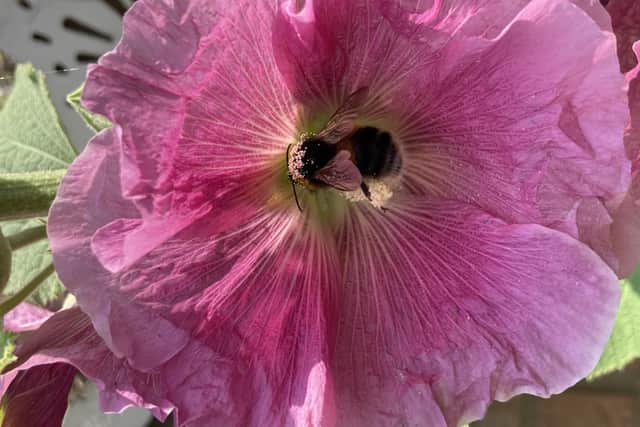Sunflowers, foxgloves and lavender: RSPB calls on Yorkshire to plant for wildlife - Anna Feeney
The reason? Last night I spotted a tantalising glimpse of a budding flower on my foxgloves, and I couldn’t wait to see if it had opened.
I will admit that I hadn’t always been quite this enthused about growing plants, but I’d chosen to plant these foxgloves for a specific purpose.


Advertisement
Hide AdAdvertisement
Hide AdBut I’d mostly chosen them because their flowers are absolute bee magnets, and I couldn’t wait to see what sort of wildlife they’d start to attract.
By choosing my plants based on how they’d help pollinators and other wildlife, it turns out I was joining a national wave of wildlife-friendly planting.
A YouGov survey, commissioned by the RSPB, showed that three in four people (75 per cent) in the UK are trying to encourage wildlife to their garden and outdoor spaces, with over two in five (43 per cent) considering pollinators when choosing a new plant.
In Yorkshire and the Humber those numbers are even higher, at 80 per cent and 46 per cent respectively.


Advertisement
Hide AdAdvertisement
Hide AdThe survey also showed the potential for even more people in the region to take up action and welcome wildlife into their gardens. Around two thirds of respondents wanted to see local birds (66 per cent) and/or pollinators (62 per cent) in their local space.
As Adrian Thomas, an RSPB wildlife gardening expert, says: “It feels like a movement is under way in which people are recognising that our gardens can be wonderful, shared spaces for us and for wildlife, to the benefit of all.”
These efforts to plant for wildlife and encourage nature into our outdoor spaces couldn’t come at a more important time.
UK nature is in trouble, with a study in 2021 showing that we are one of the most nature-depleted countries in the world, and some of our most familiar and previously common garden species are included in that decline.
Advertisement
Hide AdAdvertisement
Hide AdStarling numbers, for example, have fallen by two-thirds in Britain since the mid-1970s.
Populations of half of our bumblebee species are also falling, and hedgehog numbers have crashed from 30 million to an estimated one million since the 1950s across England, Wales, and Scotland.
There are many reasons for these declines, ranging from changing farming practices to pollution to the climate crisis. The good news is, however, that our own gardens, and balconies present a huge opportunity to help turn those numbers around, together covering 4,000km2 (an area nearly two times the size of Yorkshire Dales National Park).
That’s a huge potential area for wildlife. Our towns and cities could become metropolises for hedgehogs, birds, butterflies, newts, and frogs, as well as people.
Advertisement
Hide AdAdvertisement
Hide AdDoorsteps, window ledges, rooftop terraces, balconies, and gardens, they’re all just buzzing with potential to hold beautiful, scented plants that are good for nature.
This goes beyond just pollinators. Plants provide shelter and protection from weather and predators, they grow berries and seeds which are a vital food source in autumn and winter, and they are vital nesting spots for birds.
Here are some beginner-friendly plants that are also great for wildlife, if you’d like to give it a try (including my own favourites, the foxgloves).
- Sunflowers – beautiful and easy to grow from seed, these classic flowers are great for pollinators and are a great food source for birds when they set seed.
Advertisement
Hide AdAdvertisement
Hide Ad- Cornfield annuals – for just a couple of pounds you can have the glow of red poppies and blue cornflowers within weeks
- Mini-meadow – just let parts of your lawn grow for a few months, or even better until late summer, and be rewarded with drifts of clovers and other meadow flowers
- Lavender – the familiar lovely-smelling herb that’s brilliant for bees and butterflies.
- Foxgloves – tall purple, pink and white flowers that are bee magnets.
It’s all about finding what works for your space.
Advertisement
Hide AdAdvertisement
Hide AdAs well as planting, you can think about providing a water source for wildlife - maybe you have space to turn an old sink into a pond?
Or even convert an old bucket? Birds will start visiting for a drink and a bathe to keep their feathers in good condition, and in time dragonflies, or even frogs and newts might appear.
Or maybe you have some old wood you could pile up? Lots of invertebrates will thrive in that habitat, and they’ll provide a ready meal for everything from robins to hedgehogs.
Or perhaps you have space on your walls for a bee hotel, or a nestbox?
Advertisement
Hide AdAdvertisement
Hide AdWe can all play a part and help the nature on our doorstep – it’s just about finding the right plant for the right place and giving it a go.
For more suggestions, tips, and inspiration on how to give planting a go and join the wildlife-planting revolution from your own garden, visit the Nature on Your Doorstep page in the activities section of www.rspb.org.uk.
- Anna Feeney is a public relations executive at the RSPB.
